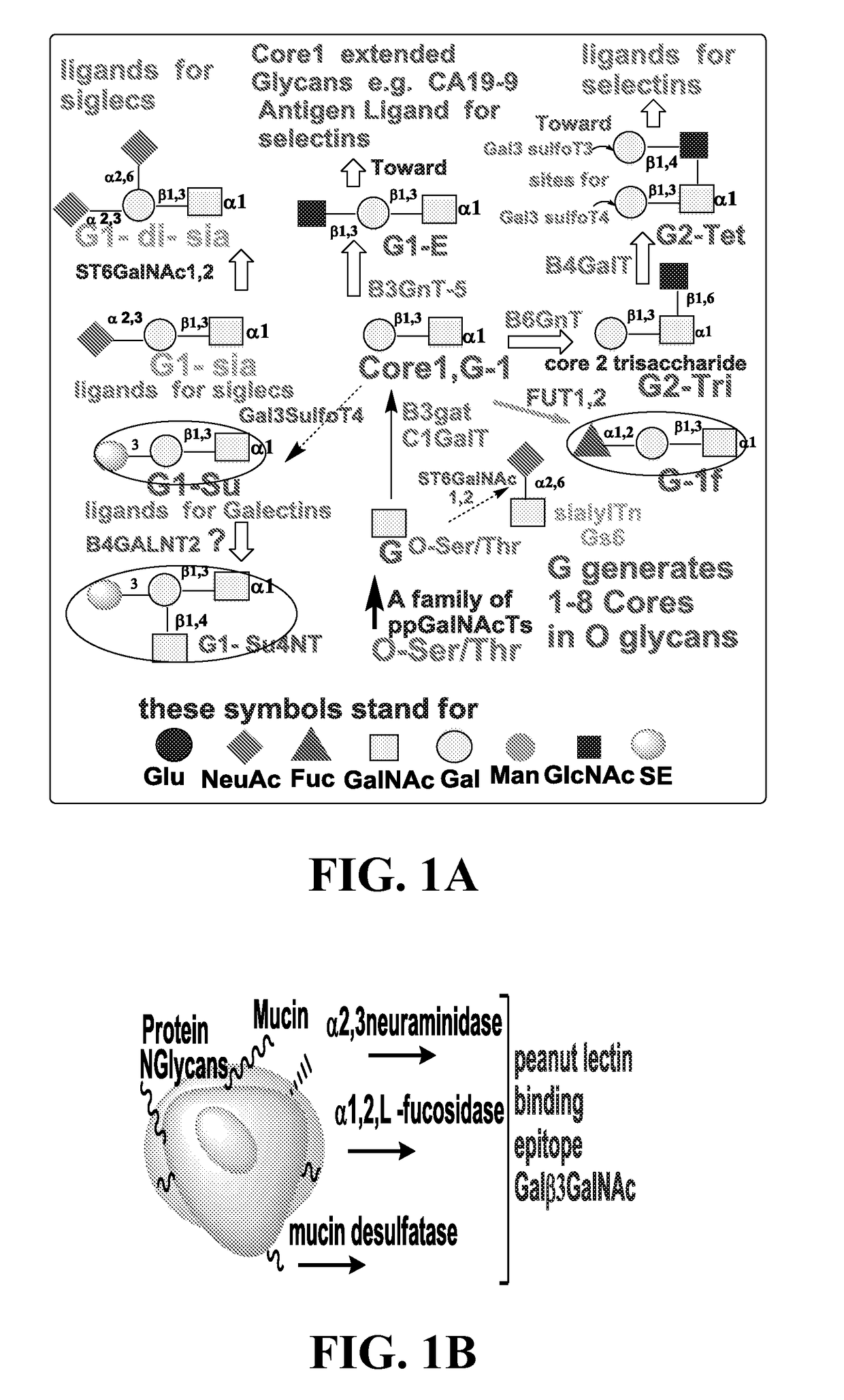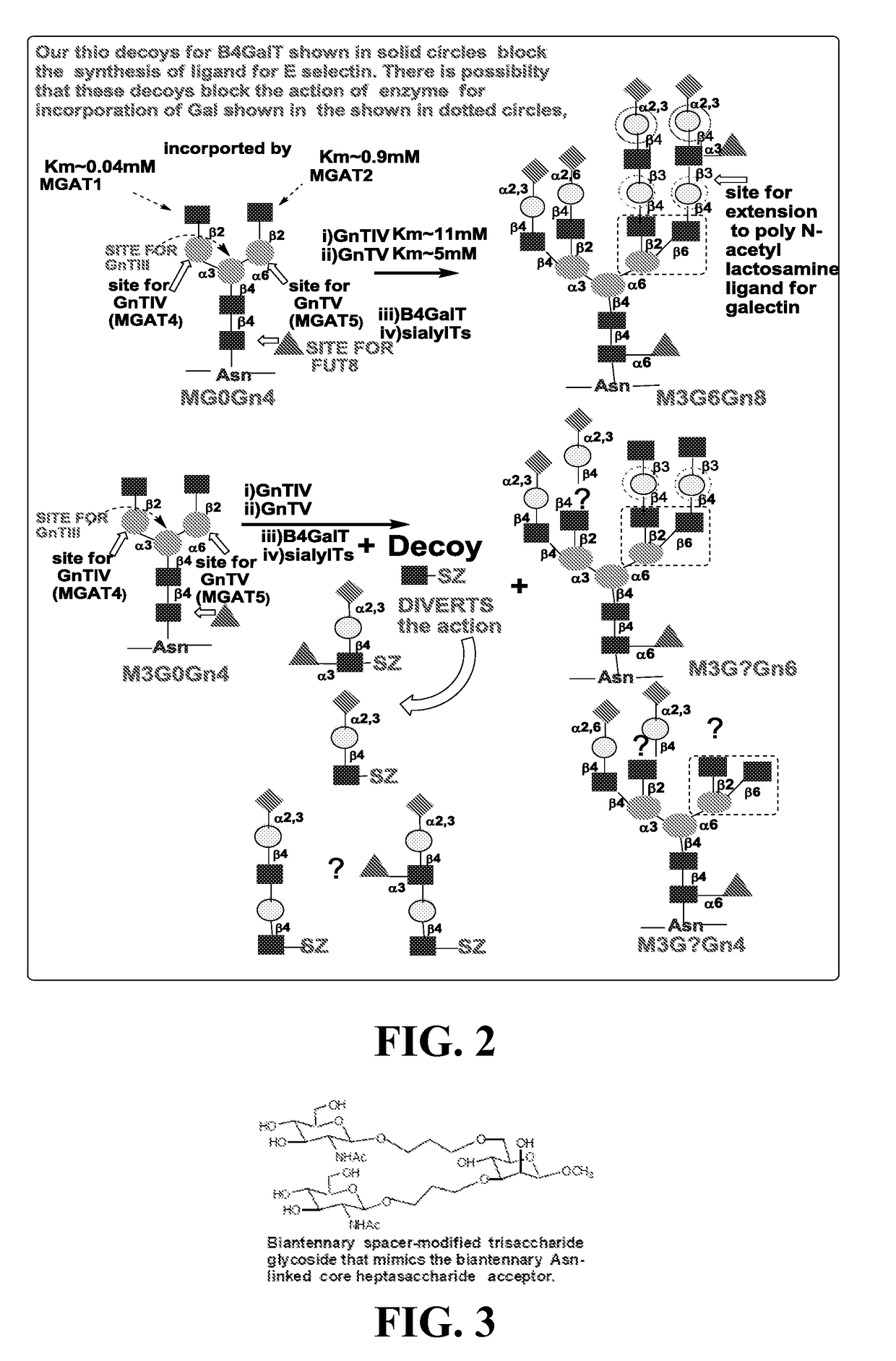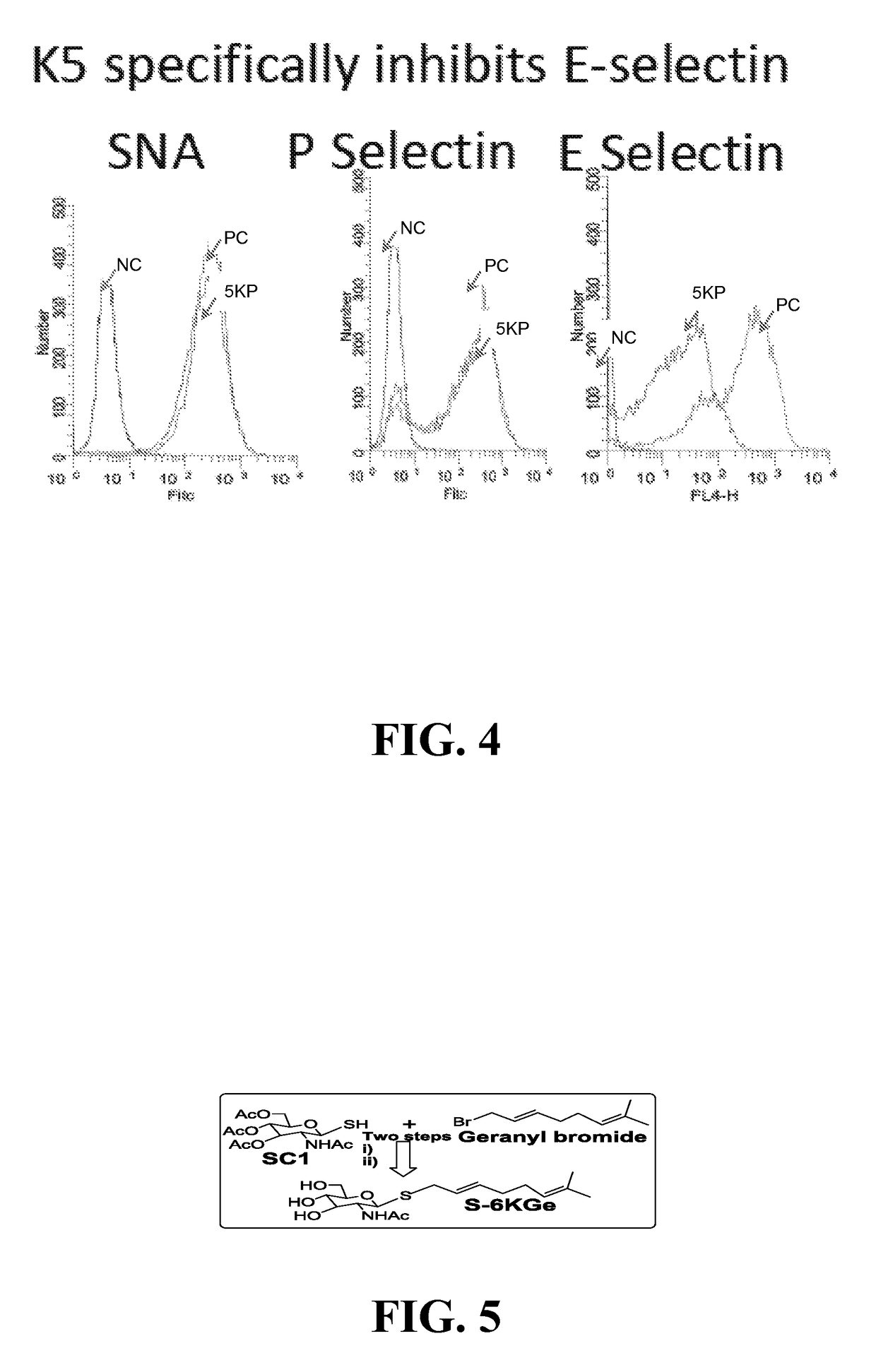Compositions, methods and treatments for inhibiting cell adhesion and virus binding and penetration
a technology of cell adhesion and virus binding, applied in the field of cell adhesion in cancer, inflammation immune dysfunction and infectious diseases, can solve the problems of toxic side effects and adverse reactions limiting clinical use, difficult to achieve balance, and excruciatingly slow progress of glycomics, so as to achieve a balanced therapeutic profile and improve the global efficacy profile , the effect of reducing the expected toxicity and adverse reactions
- Summary
- Abstract
- Description
- Claims
- Application Information
AI Technical Summary
Benefits of technology
Problems solved by technology
Method used
Image
Examples
example 1
Glycan Signatures: Development of Predictive Methods
[0135]An Innovative Approach Toward Identifying Glycan Signatures for Diagnosis and Treatment Efficacy:
[0136]Much effort has been directed toward studies of genomics and proteomics with resultant improvements in cancer diagnosis and treatment. The fourth cellular molecular source of selectivity and specificity, besides DNA, RNA and protein, is the glycome. Poised at the outer most portions of the cellular architecture, glycoproteins and proteoglycans in the extracellular matrix are largely responsible for the adhesive characteristics of cells, particularly in tissues, as well as, critical cell sorting and movement in development. Since pioneering studies identified fundamental changes in tumor cell glycans and glycolipids, investigators have struggled to understand the functional consequences. The complexity of glycosylation is now well appreciated. Coordinately-regulated linked cooperative enzyme systems form the basic synthesis p...
example 2
Predictive Assay Methods
[0161]Prostate and Breast Cancer:
[0162]The “predictive strategy” was applied first to elucidate glycan signatures in prostate and breast cancer cells. The enzyme activity profiles of prostate cancer LNCaP cells were determined by the inventors. Predictions based on these family enzyme activity profiles agreed with glycan structures of PSA produced by LNCaP cells as reported by others. Next, the enzyme activity profiles were determined for four breast cancer cell lines, ZR-75-1, MDA-MB-231, MCF-7 and T47D70. The expression profiles of chain-terminating enzymes in the latter studies predicted glycan structures which were also reported previously by others (71). Follow-on studies identified two distinct Gal:3-O-sulfotransferase activities in breast and colon cancer cell lines and tumor tissues, one specific for T-hapten Galβ3GalNAcα and another with preference for the Galβ4GlcNAc terminal in the Core-2 tetra-saccharide Galβ4GlcNAcα□(Galβ□)GalNAcα.
[0163]Ovarian C...
example 3
Proof of Predictive Methods Concept: Prediction of L-Selectin Ligand Structure
[0188]Approach:
[0189]Priority was given to three critical enzymes: α-L-fucosyltranferase, sialylTs, and sulfoTs, i.e., all three enzymes are involved in glycosylation of natural selectin ligands.
[0190]Overview:
[0191]The findings, above, showed that Galβ4 (SE-6GlcNAc) can act as an acceptor in tumor tissues for α2,3-sialyl-Ts to yield NeuAcα2,3Galβ4(SE-6GlcNAc), EXAMPLE 2, (above). Further, the latter product was found to act as an acceptor for sulfo-transferase yielding α2,3-O-sialyl-6-O-sulfo-Lex (sulfate at the GlcNAc C-6 position of Lex), i.e., a predicted tumor specific antigen. Also observed, was formation of 3-O-sialyl-6-O-sulfo-Lea, i.e., from NeuAcα2,3Galβ3(SE6-GlcNAc) which is another predicted tumor specific antigen. Similarly, biosynthesis of the carbohydrate moiety of L-selectin ligand GlyCAM is as follows, namely: i.e., Galβ4(SE-6GlcNAc)□6(Galβ3)GalNAcα1-O-Benzyl (B) acts as an acceptor for α(...
PUM
 Login to View More
Login to View More Abstract
Description
Claims
Application Information
 Login to View More
Login to View More - R&D
- Intellectual Property
- Life Sciences
- Materials
- Tech Scout
- Unparalleled Data Quality
- Higher Quality Content
- 60% Fewer Hallucinations
Browse by: Latest US Patents, China's latest patents, Technical Efficacy Thesaurus, Application Domain, Technology Topic, Popular Technical Reports.
© 2025 PatSnap. All rights reserved.Legal|Privacy policy|Modern Slavery Act Transparency Statement|Sitemap|About US| Contact US: help@patsnap.com



